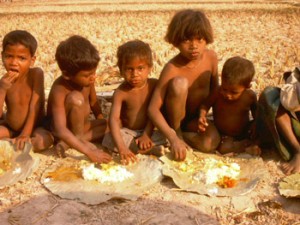SOCIAL PROJECTS
Sufi Poetry and the Kashmir Sufi Society

> Dr. A. P. J. Abdul Kalam & Khwaja Farooq Renzu Shah <
> Kashmir: Sufis, Saints and Shrines <
> Kashmiri Overseas Association, Inc. <
Kashmir Sufism-History and Background
Kashmir-The Valley of Divinity – In the heart of the great Himalayas is a beautiful valley, which has been described by poets and emperors as paradise. Over the centuries, the verdant vale of Kashmir has seen the blossoming of many exquisite flowers of the philosophy of humankind. With the bountiful beauty of nature constantly around them, the people of Kashmir have always been filled by thoughts of the divinity of creation.
With the first rays of the sun, the melodious Azaan – call for the morning prayers, resonates through the mountains, a new day of life ushers into hope and joy with fresh fragrance of the Himalayan blooms and lotuses, of fir and pine trees. The purity of the mesmerizing beauty of Kashmir transforms any seeking soul into a humble being. The enchanting natural beauty of the valley with lakes and waterfalls, mountains and dales, rivers and springs, birds and butterflies and the peace loving folks all together in harmony magnify the Oneness of Allah in totality. The mystic atmosphere of Kashmir made this a suitable place for Rishis, Saints and Sages for time immemorial.
The philosophers of the valley have had a joyous belief in the manifestation of the beauty of God, in the world that we see around us. It is a deep belief that every aspect of creation is a part of the supreme consciousness. This philosophy of love and the recognition of divine beauty were the essence of the Buddhist and Hindu philosophies of the early period in Kashmir. Islam in the valley inherited these traditions and Kashmiris developed a rich Sufi culture, which continued the tradition of a deep personal love of God.
In Kashmir, visions of the lord’s glory are constantly in front of us. Kashmir Valley is an ideal refuge for a contemplative mind that gives you space to cultivate virtues towards leading a meaningful and content life. Long walks into the forests and boat cruising in the backwaters of Dal Lake during the day and quite evenings observing the stars awakens ones senses to understand the mystery of the universe .
Khwaja Farooq Renzu Shah has written eleven books and his Sufi Mankabat on Bulbul Shah has received national and international awards. Nusrat Fatheh Ali Khan and his disciple Rufi Fateh Ali have achieved fame through Bul bul Shah Mankabat on Sufism. His association with Sufi shrines of Kashmir , particularly shrine of Sheikh-ul-Alam at Chrar Sharief Budgam district, Sufi shrine of Muqam, Waterhail Budgam, Khansahib Budgam, Makhdoom Sahib Srinagar, Rahbab sahib, Drayigam shrine, Naqashband Sahib Srinagar, BulBul Shah Sahib Nawakadal Srinagar, Khankah Moula KhanKah, Fateh kadal Srinagar are very strong . After the tragic burning of Chrar Sharief shrine including Khankah Faiz, Khawaja Farooq had honour to rebuild Khankah Faiz. His Sufi seminars are attended by thousands of shrine believers. He organized international conference of Sheikh-Ul-Alam, Bul Bul Shah and Amir-I-Kabir. Khwaja Farooq Renzu was awarded Col.Qadafi award at Tripoli for his distinguished contribution on Sufism in 1988. He was awarded by the President of India, Prime minister, Governor and chief minister of J&K for his contribution to Sufism.
Kashmir: Where Sufis are Rishis and Rishis are Sufis!
By Sultan Shaheen
The most dominant influence on the Kashmiri Muslims, in terms of their Kashmiriyat, is that of the Rishi order of Sufis. While the Sufi orders like the Suharwardi, Kubravi, Naqshbandi and Quadri, arrived in Kashmir from Persia, Central Asia, and Central and North India, the Rishi order evolved in the valley itself indigenously in the beginning of the fifteenth century. The Kashmir valley was already permeated with the traditions of Hindu ascetism and Buddhist renunciation.
The term >„RISHI“< itself is clearly a derivation from Sanskrit and Indian traditions, though some Medieval Muslim scholars have tried to show that it is derived from the Persian word raish or rish meaning the feathers or wings of a bird. Baba Dawood Mishkati, for instance, gives a rather tortuous explanation. A bird whose feathers have been removed has no control over its own movements and depends entirely on the wind. And this is also the case with a Rishi; he is alienated from the world and lives alone, buffeted by fate. This and similar explanations, have, however, failed to impress the average Kashmiri Muslim and he, by and large, accepts its Sanskrit derivation and uses it loosely like his Hindus brethren as synonymous for a sage. In fact many Kashmiris do not even associate the word with any particular order of sufis, but use the word to denote any and every sufi saint.
The indigenous Rishi order of Sufis, however, does differ not only from the establishmentarian and fundamentalist Muslims but also from other Sufi orders in its philosophy and way of life. Many writers who have chronicled the life and times of Kashmiris of this period have been attracted to the unique way of life and philosophy of the Rishi order of Sufis. An important chronicler of this period, Abul Fazl, for instance, is all praise for them. He writes: „The most respected class of people in this country (Kashmir) are the Rishis. Although they have not abandoned the traditional and customary forms of worship (taqlid), but they are true in their worship. They do not denounce men belonging to different faiths. They do not have the tongue of desire, and do not seek to obtain worldly objects. They plant fruit-bearing trees in order that people may obtain benefit from these. They abstain from meat and do not marry.“
This account is corroborated by Emperor Jahangir. He writes: „Although they have not acquired learning and marifa, they live a frank and unostentatious life. They criticise nobody and ask for nothing from anyone. They neither eat meat nor marry. They always plant fruit-bearing trees in uninhabited parts, so that people may be benefited by them. But they themselves do not hope to reap any advantages from these trees.“
The Kashmiri Muslim Rishi’s ascetic and unworldly life thus bears a close resemblance to the lifestyle of the Hindu Rishis and Munis as well as Buddhist and Jain monks.
Baba Dawood Khaki describes a Rishi as one who is an ascetic and leads a disciplined life different from those of other saints. He is free from all worldly pleasures. Baba Nasib calls them gracious to the pious and describes them as men of pure heart. Their presence has turned Kashmir into heaven, he says. Cutting themselves away from all worldly relationships, they neither marry nor bother themselves with a family life. Piety is their apparel(khirqa); their nights are devoted to worship and during the day they worship incessantly. Having abandoned all worldly desires, they have succeeded in controlling their carnal lusts. Read Full Article: > HERE <
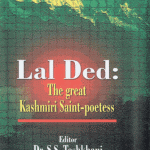
Lal Ded: The Great Kashmiri Saint-Poetess
Edited by: Dr. S. S. Toshkhani
Streifzug durch die Welt der indischen Mystiker und Dichterheiligen
– ihre Gedichte u. Gesänge –
This book represents the proceedings of a National Seminar on „Remembering Lal Ded in Modern Times“ conducted by Kashmir Education, Culture and Science Society in New Delhi on 12 November, 2000. Lalleshwari or Lal Ded, according to late Prof. Jayalal Kaul, has been the greatest genius of Kashmir of all times. This book has many eminent writers of modern period who have recollected the genius of Lal Ded for the modern world. Lal Ded was living in the 14th century in Kashmir. In spite of long interval of history, Lal Ded is remembered in every home even in modern period. Her Vaaks, or sayings, represent the best teachings for human kind today to seek unity and harmony between people of all religion and races. Her poetry is all inspiring. Her philosophy of life represents the highest science of life. She can be the leader to combine science and humanism world over, and once again establish a peaceful and melodious world of joy and happiness. Kashmiris in general and Indians and the people of the world are inspired by Lalleshwari’s teachings. This book and the seminar by KECSS cannot possibly touch all aspects of life and times of Lal Ded. However, a laudable attempt is made to recall Lal Ded for creating a joyful and harmonious world in Kashmir and the rest of India and the world. Hindus, Muslims and people of all faith remember Lal Ded with great reverence. This book should be of world-wide interest.
About Kashmir Sufism Society: Khwaja Farooq Renzu Shah believes in “Love as Revolution” which can engulf our power on all forms of terror, hate, communalism and regionalism. He is making efforts to restore the highest position of Sufism in Kashmir and make the world aware of its importance. He has practiced so far one lakh times Darood Khawani and attended Sufism Mehfils throughout the state. Read More: > Here <
- Founder Chairman of Kashmir Sufism Society
- Distinguished personality of Kashmir
- Founder of Kashmir Sufism society – Direct decedent of 1st Muslim king of Kashmir Renzu shah who was also known as Rinchen Shah (Foundation of Sufism under direct patronage of Hazrat Sharaf-u-din Bul bul Shah was laid by him in 1318 AD.)
- Meet Kashmir Sufism Society, friends and Studies at fb <
- Meet Support Internal Displaced Kashmirian Indigenous Peoples at fb<
- SAVE A SMILE & DIE Kashmir Shivaiten im Himalaya Gebirge <
The Global Peace Initiative of Women
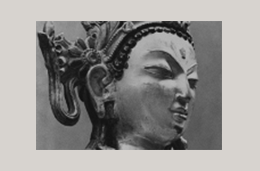
> Global Peace Initiative of Women <
Global Peace Initiative of Women (GPIW) is an international network of women and men spiritual and community leaders. The group was founded on the belief that women today have a unique contribution to make in finding alternatives to violence. GPIW also places a special emphasis on building interfaith understanding and developing leadership in young community leaders worldwide.
GPIW is located in New York and was founded in 2002 at the Palais des Nations in Geneva. Dena Merriam is the founder and convener. The co-chair is Joan Chittister, a dissident Roman Catholic nun. Read More: > HERE <
The Global Peace Initiative of Women (GPIW) was founded by a group of women religious and spiritual leaders to provide a global platform through which women and men, working in partnership, can foster the spiritual values of global unity, peacebuilding and the development of all the peoples of the world.
GPIW is an international network of women and men who come together to tap our collective spiritual wisdom to stimulate reconciliation and healing in areas of conflict and post-conflict, and to deepen understanding of oneness, compassion and the principles of ahimsa (non-harm) as central tenets of life. We believe that a shift in consciousness is needed, a change in heart and mind, if we are as a global community to meet the challenges of climate change, environmental degradation, poverty and hunger, violence and conflict.
Central to our work is the belief that the feminine qualities of wholeness, inclusion, and integration have a vital role to play in facilitating this shift and bringing greater balance to our world. Thus we make great effort to draw upon the resources of women spiritual leaders as we seek to empower these vital qualities.
Our work aims to foster respect for all peoples on Earth and for the Earth’s natural environment. We highlight humanity’s shared values, even as we profoundly appreciate the diversity of human culture and belief. We realize the importance of transmitting such values to the next generation. Thus, in our sacred work, we place special emphasis on tapping inter-spiritual wisdom and developing leadership in young adults around the world, listening to the perspectives of all as we seek together to create a more caring and compassionate world community.
Our Beginning – The Global Peace Initiative of Women has its beginnings in the process that led up to the first summit of religious leaders held at the United Nations in New York in 2000, the Millennium World Peace Summit of Religious and Spiritual Leaders. During the planning for that summit, it became clear that very few of the religious leaders invited to speak at the UN would be women. And indeed this was the case. During the Summit, the political and institutional issues surrounding religion came into play. In frustration, the women came together and called for a followup meeting to focus on what they had come to the UN to do – to explore how they could contribute to reconciliation and healing in areas of conflict and tension.
This meeting took place two years later at the Palais des Nations in Geneva with over 600 women from over 70 countries, and from this summit the Global Peace Initiative of Women was formed.
Welcome to the Newsletter from www.SriAnandamayiMa.org :
The festival of Maha Shivaratri (the great night of the worship of Lord Shiva) was celebrated in the Omkareshwar Ashram with great joy. Many devotees came from Indore and with our ashram visitors and school children, the celebration and worship went on into the night before the presence of Baba. Wonderful peace and blessing were experienced by all.
The ashram received an invitation to a conference sponsored by the Global Peace Initiative for Women (> see www.GPIW.org <) to promote a dialog between Sufis and Yogis.
Swami Mangalananda was sent as a delegate and speaker. There were prominent Sufis from Afghanistan, Pakistan, Iran and India present, and many Yogis and Swamis from India.
In the proceeding discussions, many common practices and beliefs were discovered between the two groups which promoted a deep feeling of unity and brotherhood. The final day many practical talks were held on what the two groups can practically do to help the uplift of world consciousness, and spread the unity discovered to their respective groups. It was a highly successful and unifying event and all present vowed to meet yearly to continue the dialog.
As always, we end with Ma’s comforting words: „Your sorrow, your pain, your agony is indeed my sorrow. This body understands everything.“
- DEIN AYURVEDA NET: Articles about Islam, Medicine, Sufi Arts and Culture:
- Yoga, Bhakti Movement, Sufism, Islamic Arts and Culture
- Islamic Plant Medicine and History
- Die Kashmir Shivaiten im Himalaya, Zentrum Interkulturell
- Omkareswhar, Schulprojekt, Bhajans, Kirtan Lieder der Freude und Liebe
- Omkareshwar, Shiva PURANAS, 12 Seats of the Lord
- Kashmir Overseas USA, Save A Smile Project, Hospital Research Center
- UNESCO, Shiva Puranas, Maha Puranas, World Digital Library
- BYO – Österr. Yoga Verband, Austrian Yoga Alliance: www.yoga.at – “ Eintreten in das Göttliche Bewusstsein“ – Die Spiritualität des kashmirischen Shivaismus.
- SHAMBALA SUN – GPIW at UN at Climate Change
- GPIW – Charter For Compassion
- Kashmir: Sufis, Saints and Shrines
- Hazrat Nasir Mohammed Fakir Soofi Alquadri
- Mowlana Jalaluddin Rumi
- SUFI POETRY – The appeal of Sufi poetry is universal, great Sufi Poets such as Rumi, Hafiz and Omar Khayyam are appreciated by both Sufi’s and non Sufi’s alike. This is because their poetry expresses the universal aspirations of spiritual seekers .
- Music of Kashmir
- Dhwani Kathak Dance, Music Academy
- Meet Kashmir Sufism Society , friends and Studies at fb <
- Meet Kashmir Shaivaism, friends and Studies at fb <
- Meet Swami Mangalananda, friends at fb <
- Meet GLOBAL ONESS PROJECT, friends at fb <
Himalayan Mystic Trails and Puli School

> ESTC Ecotourism 2010 Conference <
Yunnan (simplified Chinese: ä��南; traditional Chinese: 雲南; pinyin: Yúnnán, IPA: [y̌nnǎn] ( listen); literally „South of the Clouds“) is a province of the People’s Republic of China, located in the far southwest of the country spanning approximately 394,000 square kilometers (152,000 square miles). The capital of the province is Kunming. The province borders Myanmar (Burma), Laos, and Vietnam.Yunnan became part of the Han Dynasty (206 BC-220 AD) during 2nd century BC. It became the seat of a Tibeto-Burman speaking kingdom known as Nanzhao in the 8th century. Nanzhao was multi-ethnic, but the elite most likely spoke a language close to Yi and modern Burmese.nd modern Burmese
Yunnan is rich in natural resources and has the largest diversity of plant life in China. Of the approximately 30,000 species of higher plants in China, Yunnan has over 17,000.. Read More: > HERE <
Introduction – Puli Tibetan school is located in Dechin County in Northwest Yunnan Province of China. This area is primarily inhabited by Kham Tibetan people. A villager named Aniu built this school through sheer determination to save his own culture from the fate of extinction. (Read the story here.)
Besides a small fraction of support from the government, the school has entirely relied on outside donation and the teachers’ wit to operate on a shoe-string budget. During its seven years of existence, Puli School has not only managed to feed and shelter dozens of children who otherwise have no financial means to get any education, but also played a pivotal role in passing down the wisdom and art from an ancient tradition to the next generation.
In Dechin County and its neighboring area, this is one of the few schools that teach Tibetan language, Tibetan herbal medicine, and other culture-related subjects in their curriculum. Children there also learn traditional arts including wood carving, pottery, painting, and traditional dancing forms.
As a non-profit organization, We strive to serve as a bridge between the east and the west. We promote understanding of the diverse cultures in western China and ethnic Tibet. We provide people experience to gain insights about their life and cultivate a holistic view of our relationship with the planet earth.
We offer > travel programs < that integrate education, cultural exchange, community service and fun! We also provide free consultation to help organize your own trip. Contact us for details. We offer > community service < opportunities for people who have the desire to serve, either through our travel program or through participation of local events in Seattle.
How to donate – To support Puli Tibetan School, you can donate through > „Tibetan Children’s Education Fund“ < operated by our non-profit partner Crooked Trails. Your donation will be eligible for tax deduction. You may also ask for matching funds from your employer.
TRAVEL PROGRAM:
Mystic Trails and its partner Crooked Trails represent Puli School to exhib and sell art works made by students and teachers. The proceeds of the sale will go back to support the school.
Artist Priscilla Moore is working with Mystic Trails to produce greeting cards using Puli students‘ painting. We wish to help Puli to establish a long-term product line that can provide continuous funding for the school. On our Mount Kawa Karpo trekking tour, we will visit the school and take part in some school activities.
Past projects: > 2006 Hamilton-Puli Gift Exchange Program <
INSIDE THE HIDDEN KINGDOM OF SHANGRI LA – Trekking the Mt. Kawa Karpo Inner Pilgrimage Circle and Culture Exchange with Tibetans of Northwest Yunnan.
Etymology of Shangri-La – The phrase „Shangri-La“ most probably comes from the Tibetan ཞང་,“Shang – a district of Tsang, north of Tashilhunpo“ + རི, pronounced „ri“, „Mountain“ = „Shang Mountain“ + ལ, Mountain Pass, which suggests that the area is accessed to, or is named by, „Shang Mountain Pass“. Several places in the Buddhist Himalaya between northern India and Tibet have claimed to be the location for Hilton’s fictional Shangri-La, largely to attract tourism.
In China, Tao Qian of the Jin Dynasty described a Shangri-La in his work Story of the Peach Blossom Valley (Chinese: 桃花源記, pinyin: TáohuÄ� Yuán Jì). In modern China, the Zhongdian county was renamed to 香格里拉 (XiÄ�nggélǐlÄ�, Shangri-La in Chinese) in 2001, to attract tourists. The legendary Kun Lun Mountains in Tibet offer other possible Shangri-La valleys. Read More > HERE <
Highlight – This journey takes you to the eastern edge of the Tibetan Plateau, one of the earth’s most remote and pristine places inhabited by humans. By bus you will travel through rugged terrain on a road that is an engineering marvel. Where the road ends, you will trek either on foot or horseback to explore a world that remains hidden to the less-determined traveler.The trip culminates in the Mount Kawa Karpo pilgrimage circle near a Tibetan village called Yubeng. You are not only rewarded with the enchanting beauty of the natural landscape, but also with a colorful tapestry of multi-ethnic culture and art.
As you move through this magical land, encountering people who live by maintaining a deep bond with their natural surroundings, you will have the opportunity to discover life in its simplest, yet most luminous form.
THE CENTRAL FIELD OF CHINA – From Forbidden City to the Terra Cotta Warriors
Highlight This 10-day trip will take you to the two of the most ancient cities in the heartland of the central China, Beijing and Xi’an. For thousands of years, these two cities have witnessed the rise and fall of numerous Emperors. Among them is the Qin Shi Huang who initiated the building of the Great Wall hoping to forever guard his kingdom from outside invasion. He also left us with the Terra Cotta Army forever guarding his mausoleum. Today the emperors and their dreams vanished away, leaving behind a legacy that awaits your exploration. This trip will not only sample the major historic sites, but also take you into ordinary people’s homes where you will learn how to make a traditional Chinese cuisine from our host family while getting a taste of the sweet and bitter reality of their lives.
Chinese cuisine is a term for styles of food originating in the regions of China, many of which have become widespread and popular in other parts of the world — from Asia to the Americas, Australia, Western Europe and Southern Africa.
Where there are historical immigrant Chinese populations, the style of food has evolved – for example, American Chinese cuisine and Indian Chinese cuisine are prominent examples of Chinese cuisine that has been adapted to suit local palates. In recent years, connoisseurs of Chinese cuisine have also sprouted in Eastern Europe and South Asia.
Chinese Cuisine – Contemporary health trends
- According to the United Nations Food and Agriculture Organization estimates for 2001–2003, 12% of the population of the People’s Republic of China was undernourished.The number of undernourished people in the country has fallen from 386.6 million in 1969–1971 to 150.0 million in 2001–2003.
- Undernourishment is a problem mainly in the central and western part of the country, while „unbalanced nutrition“ has made chronic diseases more prevalent. As of 2008, 22.8 percent of the population were overweight and 18.8 percent had high blood pressure. The number of diabetes cases in China is the highest in the world. In 1959, the incidence of high blood pressure was only 5.9 percent.
- A typical Chinese peasant before Mao Zedong would have eaten meat rarely and most meals would have consisted of rice accompanied with green vegetables, with protein coming from foods like peanuts and soy products. Fats and sugar were luxuries not eaten on a regular basis by most of the population. With increasing wealth, Chinese diets have become richer over time, consuming more meats, fats, and sugar.
- Health advocates put some of the blame on the increased popularity of US foods, especially fast food, and other culinary products and habits. Many US fast food chains have appeared in China, and are highly successful economically. These include McDonald’s, Pizza Hut, and Kentucky Fried Chicken (KFC).
- An extensive epidemiological study called the China Project is being conducted to observe the relationship of disease patterns to diet, particularly the move from the traditional Chinese diet to one which incorporates more rich US-style foods.
- Controversially, Professor T. Colin Campbell, an „outspoken vegan“, has implicated the increased consumption of animal protein in particular as having a strong correlation with cancer, diabetes, heart disease, and other diseases that, while common in Western countries, were once considered rare in China. He suggests that even a small increase in the consumption of animal protein can dramatically raise the risk of the aforementioned diseases.
- READ FULL ARTICLE > H E R E <
- FREE KRISHNA FOOD CHANNEL, Tips, Recipes, > HERE <
- FREE DHARMA FOOD FOR THOUGHT, Tips, Articles > HERE <
- Meet Indian Diabetics, friends, studies medicine at fb <
- Meet Ayurveda4Uall, Note, Hypertension according to ayurveda at fb <
- Meet Natural News, health and wellness topics, friends at fb <
GRAMEEN DANONE FOOD & SHAKTI DOI
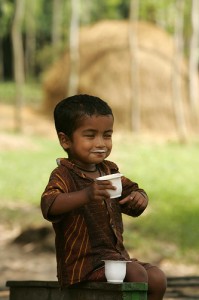
* Shoktidoi means energy in Bengali. One cup of yogurt provides 30 per cent of the recommended daily intake of nutrition. Mothers are keen to buy the yogurt for their children.- Bogra, Bangladesh. June 20, 2007.
Grameen Foundation, founded as Grameen Foundation USA, is a global 501(c)(3) non-profit organization based in Washington DC that works to replicate the Grameen Bank microfinance model around the world through a global network of partner microfinance institutions. Its CEO is Alex Counts. It is separate from organizations called Grameen Foundation in different countries, such as Grameen Foundation Australia. The Foundation was founded in 1997 as a vehicle to replicate the model of Grameen Bank beyond the borders of Bangladesh and increase the access of poor people to microfinance by millions worldwide. Muhammad Yunus, the founder and managing director of Grameen Bank, sits on the Board of Directors. Current chair of the board is Paul Maritz, CEO of VMWare and formerly a senior executive at Microsoft. Read More > HERE <.
Muhammad Yunus (Bangla: মুহাম্মদ ইউনুস, pronounced Muhammôd Iunus) (born 28 June 1940) is a Bangladeshi banker and economist. He previously was a professor of economics where he developed the concept of microcredit. These loans are given to entrepreneurs too poor to qualify for traditional bank loans. Yunus is also the founder of Grameen Bank. In 2006, Yunus and the bank were jointly awarded the Nobel Peace Prize, „for their efforts to create economic and social development from below.“
Yunus himself has received several other national and international honors. He is the author of Banker to the Poor and a founding board member of Grameen America and Grameen Foundation. In early 2007 Yunus showed interest in launching a political party in Bangladesh named Nagorik Shakti (Citizen Power), but later discarded the plan. He is one of the founding members of Global Elders. Yunus also serves on the board of directors of the United Nations Foundation, a public charity created in 1998 with entrepreneur and philanthropist Ted Turner’s historic $1 billion gift to support United Nations causes. The UN Foundation builds and implements public-private partnerships to address the world’s most pressing problems, and broadens support for the UN. Read More: > HERE <
The Bangladesh Enterprise Institute (BEI), an independent non-profit research centre, in association with The Foundation for Development Cooperation (FDC) based in Australia and Libra Advisory Group based in UK has initiated the Bangladesh Social Enterprise Project (BSEP), supported by the British Government’s Department for International Development (DFID).
This project aims to utilize key strengths of the private sector to address some of the poverty related issues of our country.
The project purpose is ‘to identify and build innovative partnerships within the private sector to undertake projects and programmes which are commercially viable and directly benefit the poor in alleviating poverty and at the same time, meet the development objectives of Bangladesh.’
Grameen Danone Foods, popularly known as „Grameen Danone“ is a social business initiative, launched in 2006. Grameen Danone Foods Ltd is a joint venture between four Grameen companies; Grameen Byabosa Bikash, Grameen Kalyan, Grameen Shakti and Grameen Telecom — and Groupe Danone, a Francebased global leader for nutritional food products.
The main objective of Grameen Danone is to bring daily health nutrition to the nutritionally deprived population of the country, especially children and as a result alleviate poverty through the implementation of a unique proximity based business model.
Grameen Danone Foods Ltd. produces a special yogurt called Shakti Doi from pure full cream milk that contains protein, vitamins, iron, calcium, zinc and other micronutrients needed to fulfill the nutritional requirements of children of Bangladesh, thus contributing to improving their health.
While ‘Shakti Doi’ (which means ‚power yogurt‘) is primarily intended for children, it is also appropriate for adults. The price of each 80 gram cup of yogurt is kept at an affordable.
Phulki endeavors to spark the development of the socioeconomic conditions of disadvantaged people particularly by promoting the rights of women and children.
“Phulki” meaning “spark” in Bengali is a non-profit organization that brings a flicker of light to the lives of disadvantaged communities. We spread the light of hope into the lives of working women who, due to their circumstances, are forced to leave their children at home, often in hazardous conditions, to earn a living. From its beginnings in 1991, Phulki recognized the link between children’s rights and women’s empowerment and the need to ensure a secure future for children while their mothers are working to earn a living. These goals are the pillars for all of Phulki’s activities. It strives for the rights of women and children to be universally recognized and achieved. Through devoting all its resources and energy into working with disadvantaged women and children, Phulki is helping them to see that they both deserve and can achieve a secure, healthy and happy life.
Initially, Phulki focused on the plight of female workers who have migrated to Dhaka city from rural areas, in search of a livelihood. The city does not have the requisite infrastructure and support systems to sustain this large influx of migrant workers. In Bangladesh export oriented garment industry has grown rapidly over the last 20 years to become the primary source of foreign exchange for the country. Over 1.5 million workers are employed in garment factories, out of which, approximately 80% are women. Phulki’s early activities ensured the well-being of the migrant workers and their children who suffered due to poverty and lack of care.
- Meet Grameen Health Care, Friends, Food, Studies at facebook <
- Meet Phulki and Friends at facebook <
- Meet Yunus Center, friends, fans at fb <
Food Relief, Umbrella Project, India Divine
In 1990, when Hilda Brown lost her favorite brown umbrella, she was inspired to found THE UMBRELLA PROJECT, Inc. an all-volunteer 501(c)3 Not-For-Profit organization that uses the common language of art to empower young people.
Envisioning everyone in the world carrying colorful canopies whenever life’s storms threaten, Hilda encourages school-age children to paint in small groups on over-sized white-nylon umbrellas with non-toxic fabric markers. With these tools, healthy, ill, and challenged children share their artistic images with each other and the world.
Believing in the creative spirit as a healing power on the planet, Hilda continues to gather our youngest World Citizens under her umbrella of protection. Through The Umbrella Project, she encourages them to artistically express their hearts and in the process recover hope and peace while helping other children in need.
Bhaktivedanta International Charities Inc. is a tax exempt 501(c)(3) nonprofit charitable organization registered in the United States of America dedicated to carrying out relief activities to help the poor and needy in India.
Every month the Bhaktivedanta International Charities feeds over 6,000 needy children in the drought and flood afflicted areas of Orissa, Andhra Pradesh and Tamil Nadu, which comprise some of the poorest regions of India. Below you can find some recent reports of our activities, or if you click the picture above you can be taken to our picture gallery.
Bhaktivedanta International Charities was founded for the following purposes:
- To provide humanitarian need to the poor and needy in India in the form of free food, medicines, and clothes.
- To start and run educational institutions and to provide all necessary facilities for the education of the poor irrespective of caste, community, creed or religion.
- To afford medical relief to the sick and the suffering without any restriction as to religion, caste, community, or creed by construction and or maintaining hospitals, clinics, dispensaries, maternity and childrens homes, etc.
- To construct and or maintain libraries for the educational benefit of the public.
- To grant scholarships or subsidies to poor and needy students.
WFP – WORLD FOOD PROGRAMME

> FOOD & AGRICULTURE ORGANIZATION <
> INT. AGRICULTURAL DEVELOPMENT <
Fighting hunger worldwide – The World Food Programme is the world’s largest humanitarian agency fighting hunger worldwide.
In emergencies, we get food to where it is needed, saving the lives of victims of war, civil conflict and natural disasters. After the cause of an emergency has passed, we use food to help communities rebuild their shattered lives.
WFP is part of the United Nations system and is voluntarily funded.
A video explaining the type of food World Food Programme distributes in an emergency like Haiti, and why…
Born in 1962, WFP pursues a vision of the world in which every man, woman and child has access at all times to the food needed for an active and healthy life. We work towards that vision with our sister UN agencies in Rome — the Food and Agriculture Organization (FAO) and the International Fund for Agricultural Development (IFAD) — as well as other government, UN and NGO partners.
In 2010 we aim to reach more than 90 million people with food assistance in 73 countries. Around 10,000 people work for the organization, most of them in remote areas, directly serving the hungry poor. Download Annual Report
To learn more, watch the video outlining our mission, read our Mission Statement or browse our Policy Resources section.
WFP’s five objectives:
1. Save lives and protect livelihoods in emergencies
2. Prepare for emergencies
3. Restore and rebuild lives after emergencies
4. Reduce chronic hunger and undernutrition everywhere
5. Strengthen the capacity of countries to reducehunger
> Meet WPF World Food Programme at facebook <
> Meet Food and Agriculture Organization of the UN (FAO) at fb <
> Meet I LOVE INDIAN FOOD, friends, fans at facebook <
> Meet Natural News, friends, studies at facebook <
NaturalNews.com is an independent news resource that covers the natural health and wellness topics that empower individuals to make positive changes in their personal health. NaturalNews offers uncensored news that allows for healthier choice.
THE EAST MEETS WEST MUSIC INC.

http://eastmeetswestmusic.com/
> Ali Akhbar College of Music, LAYA Project <
> GHARANA – Benares Music Academy <
„There is something beautiful about the stage. There is a performer and there is an audience. Nothing is in the way. The sound remains pure and unburdened by things like marketing and distribution. My hope is for this label to be more like a stage and less like the music business as I have experienced it.”
–Ravi Shankar
Ravi Shankar (Bengali: রবি শংকর; born 7 April 1920), often referred to by the title Pandit, is an Indian sitarist and composer. He has been described as the most well known contemporary Indian musician by Musik in Geschichte und Gegenwart.Shankar was born in Varanasi and spent his youth touring Europe and India with the dance group of his brother Uday Shankar. He gave up dancing in 1938 to study sitar playing under court musician Allauddin Khan. After finishing his studies in 1944, Shankar worked as a composer, creating the music for the Apu Trilogy by Satyajit Ray, and was music director of All India Radio, New Delhi, from 1949 to 1956. Read more: > HERE <
WELCOME – The Ravi Shankar Foundation proudly announces the launch of East Meets West Music. EMW Music is a listener’s passport to the sitar master’s personal archive of thousands of hours of live performance audio, film footage, interviews, and studio masters. By making personally selected source material from this collection available, Ravi Shankar hopes to bridge any divide between his recorded music and his audience. EMWMusic also provides a vibrant space for new artists, projects, and collaborations. We are thrilled to begin this journey with our long time supporters and new fans alike.
The aim of the Benares Academy is to:
- Establish a school for the teaching of Indian Classical music in the traditional Benaras Gharana style;
- Provide scholarships to children to assist them in their learning of this musical style;
- Create opportunities for students and young artists to develop their potential through study and performance;
- Provide right livelihood for qualified and dedicated teachers.
For this purpose, the Mishra family purchased land in Benares on which to build a residential music school. The construction of the building took around three years to be completed and now the Academy is a well-structured place to receive students from all over the world.
For foreign students, who are committed to studying seriously, the Academy opens its doors providing them with all facilities needed such as a proper music hall, nice rooms with or without toilet attached, spacious kitchen, mineral water filter and dining room, apart from a safe and peaceful atmosphere. Moreover, it is located five minutes walk from the Ganga River.
The mission of the Ali Akbar College of Music is to teach, perform and preserve the classical music of North India, specifically the Seni Baba Allauddin Gharana (tradition), and to offer this great musical legacy to all who wish to learn. The Ali Akbar College of Music offers education in the classical music of North India at the highest professional level. Our primary instructors are the internationally recognized sarode Maestro Ali Akbar Khan and the master of percussion Pandit Swapan Chaudhuri, from whom our students learn the necessary musical skills, knowledge and understanding to contribute significantly to musical life.
At a dargah (Islamic shrine) situated in the south-east part of India, the singers sing devotional songs in the Qawwali style, with percussion accompaniment. The lyrics are a mix of the local south Indian language, Tamil and Arabic, while the music style is that of northwestern India.
These artists are featured in the award-winning music documentary LAYA PROJECT (www.layaproject.com), and have also released a full album called NAGORE SESSIONS, available at www.earthsync.com
A tribute to the resilience of the human spirit, LAYA PROJECT is a documentary about the lives and music culture of coastal and surrounding communities inthe 2004 tsunami-affected regions. Some of these performances are rare, and documented for the first time.
Sree Debasish Dass (Pintoo) Born in a very tradtional musical familly on May day, Sree Debasish Dass has carved a special niche for himself in the world of Tabla, the king of Indian percussion instruments. He was initiated into Tabla at the tender age of five by his beloved father Late Dilip Kumar Pandit a highly acclaimed Tabla player of Farukkabad Gharana.
True to his date of birth, which symbolises sincere labour, > Debasish < (popularly known as Pintoo) put in years of relentless effort and unfailing dedication to master the art of playing Tabla. He completed his graduation from the world famous Visva-Bharati University founded by the great > Rabindra Nath Tagore < . Thereafter he plunged fully into the subtle complexities Tabla and completed his Diploma in music, Bachelor and Master degree in Tabla.
http://swara.at/ (Plattform f. Indische Musik und Tanz in Österreich)
http://www.alankara.com/ (Ver. z. Förd. d. Ind. Musik ,Kunst in Wien)
http://www.indigenouspeople.net/taino.htm (Ind. Friends, Haiti)
Bhaktivedanta, Share your Care, Eye Camp

Bhaktivedanta Hospital, Mira Road, Mumbai is once again conducting a free cataract surgery camp at Barsana village, Mathura Dist, U.P. Barsana Eye Camp is an annual feature since 1992. Every year we screen more than 2000 patients and deserving cases are operated for cataract. Barsana is surrounded by a cluster of 120 villages. The villagers here are extremely poor and could barely afford one square meal a day. There are no medical facilities in this cluster. Due to their extreme poverty and lack of medical facilities they prefer to lead a life of blindness due to cataract. Bhaktivedanta Hospital takes lot of efforts to provide them modern and quality services. This year the Bhaktivedanta Hospital will conduct the camp from 31st January to 7 February 2008. All the required equipments, medicines, lenses, surgical items, Operating microscopes etc are transported from Mumbai to Barsana.
The team of volunteers from Bhaktivedanta Hospital and congregation devotees from ISKCON, Chowpatty put their efforts together to build a fully equipped, modern and sterile operation theatre in the primary health center at Barsana. This year the team consists of 12 qualified and well known Ophthalmologists from Mumbai, more than 30 MBBS doctors, 5 Nurses and around 150 volunteers from various fields who all take a break from there respective engagements and make themselves fully available for the camp working for more than 10hrs a day without expecting anything in return.
BARSANA EYE CAMP 2010
Special featurees of the camp:
- Detailed preoperative examination of the eye.
- Advanced imported German Zeis operating microscopes are used.
- Sterilization standards and the protocols involved are of very high standards.
- Suture less surgery for cataract removal with implantation of intra occular lense in each patient.
- 24 hrs. post-operative care before discharge.
- Immediate post operative follow up camp after 4 days of discharge.
- Final follow up after 40days of discharge.
- Patients receive post-operative medicines for 40 days along with 1 blanket and black goggles totally free of cost.
- Wholesome lacto-vegetarian food for the patient and 1 relative till the patient is discharged completely free of cost.
- All the patients and relatives are treated with great love irrespective of their cast, creed and financial backgrounds.
- Children, One-eyed patients and patients requiring specialized care, who cannot be operated in the camp setup are brought to Bhaktivedanta Hospital in Mumbai, are admitted, operated and sent back to Barsana, free of cost. Over 30,000 screened & 3000 plus operated Yet millions remain to be reached. Due to the overwhelming response and dire need of the villagers we also conduct dental camp during the same period at Barsana.
- Meet SHARE YOUR CARE, friends, fans at facebook <
„Daya Dan Volounteers Worldwide Group“
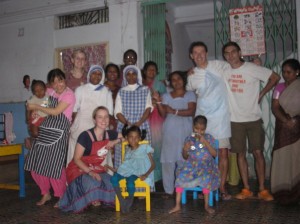
Mother Teresa (26 August 1910 – 5 September 1997), born Agnesë Gonxhe Bojaxhiu (pronounced [aɡˈnɛs ˈɡɔndʒe bɔjaˈdʒiu]), was an Albanian Catholic nun with Indian citizenship who founded the Missionaries of Charity in Kolkata (Calcutta), India in 1950. For over 45 years she ministered to the poor, sick, orphaned, and dying, while guiding the Missionaries of Charity’s expansion, first throughout India and then in other countries. Following her death she was beatified by Pope John Paul II and given the title Blessed Teresa of Calcutta. Read more: >HERE <
Daya Dan was set up in 1998, a year after the death of Mother Teresa, who adopted Calcutta as the centre of her global charitable order that now runs more than 750 centres across the world.
The Missionaries of Charity, famous for working among the sick, destitute and dying, said it was committed to serving the ideals of Mother Teresa and improving the quality of care in Daya Dan.
Nobel Peace Prize winner Mother Teresa, who founded the order in 1950 in Calcutta, died in 1997 at the age of 87.
Daya Dan is a Temple of Joy in wich the children of Blessed Mother Teresa can live their life sorrounded by the Love of many people.
The volounteers, from all over the world, granted a big help in the daily works and a lot’s of Love for this children.
To be a volounteer it’s very easy: you just need to go to kolkata and present yourself in Mother House (54/A A.J.C. Bose Road), or in monday or in fryday, at 3 pm for registration and ask to serve in Daya Dan.
> www.worldprayers.org from all traditions <
Where there is hatred, I may bring love, where there is wrong, I may bring the spirit of forgiveness, where there is Discord, I may bring Harmony, where there is Error, I may bring truth. – Mother Theresa
You will work with this children and will happen to you what’s happened to us: you will enter in a Love wich have no exit.
Peace and Joy will take your life and your whole being. You will understand that what is inside you is inside everybody and you will experience to be one with all.
All the volounteers says „We are one“, because we show each other to be ready to help everybody, to take care of everybody.
Each volounteer is a treasure for umanity and a real friend.
Are you ready to be volounteer?
> Meet Daya Dan Volounteers Worldwide Group and Fans at fb <
KASHMIRI OVERSEAS ASSOCIATION, INC.
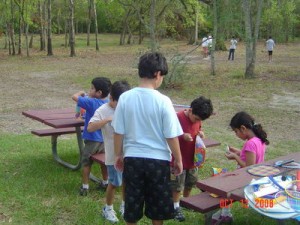
> SAVE A SMILE, Sponsor a Child <
> KASHMIR SHIVAITEN IM HIMALAYA <
> Kashmiri Overseas Association USA <
The KOA organization has its origins in the early meetings of several Kashmiri > Pandit < families in the Washington D.C. and Maryland areas. These families soon came to realize the importance of building a community structure which could include other families too in a bond for mutual preservation and growth. As more families and members joined the founding group, the organization evolved to become a national outfit with regional chapters, documented bye-laws, systems and procedures as well as a non-profit status to better seek donations and pursue community actions.
The KOA Community: > * H E R E *<
Shriya Bhat Mission Hospital and Research Center: Since then the hospital is working as a multi-disciplinary clinic. Over the years some amenities have been added like an air conditioner, refrigerator, ECG machines, glucometers, nebulizers, traction apparatus etc. A medical van has been kept at the disposal of the sick patients. The Center is open to every body irrespective of cast or creed, region or religion.
There is a work force of consultants in internal medicine, neurology, general surgery, urology, orthopedics and dermatology in regular attendance. Patients are registered for examination and treatment round the week. The mission hospital has so far rendered its services to more than 35 thousand patients. All the patients receive a free 3-4 week supply of available medicines. A mini laboratory helps with some basic investigations, again conducted free on the patients.
Sharda Peeth Rishi Model School, Udhampur, J&K: In 1990, terrorism and sectarian violence caused nearly 500,000 Kashmiri Hindus to flee the land of their ancestors, the fabled valley of Kashmir in the Indian state of Jammu and Kashmir. These victims of terrorism, refugees in their own country, left behind virtually all of their worldly possessions as they had to flee under threat to life and honor.
As in most situations, the worst sufferers of this violence were the children of this displaced people. With their parents consumed with, yet often unable to, provide the basics of living to their families these unfortunate children were often left without the only hope for a better life – a healthy education.
The Rishi Memorial School was started in the mid-1990s with contributions from a group of US-based Indian-Americans concerned for the future of these indigent children. This remarkable experiment in social self-service began with only about a dozen students and one teacher.
Save a Smile – Sponsor a Child: The refugee camps in Jammu and Kashmir house hundreds of thousands of Kashmiri Pandits displaced from their homes as a direct result of the Islamic militancy in the valley. This tragedy has resulted in children being denied the opportunities that we take for granted. Since 1995, the Kashmiri Overseas Association, USA has implemented the Sponsor-A-Child Program for the age group 5 year olds to 17 year olds. This program aims to provide educational opportunities to the children directly affected by the tragedy. While individuals worldwide have contributed to these programs more children are in need of our financial support than currently available funds can support, there are many more that deserve our assistance. Goal: To provide tuition, school supplies and living expenses to school children who are currently living in refugee camps.
Religion – The religious practices of Hindus of Kashmir (popularly known as Kashmiri Pandits) revolve around the worship of Shiva and Shakti. All other deities (gods and goddesses) of the traditional Hindu pantheon are worshipped as various manifestations of Shiva and Shakti. Shiva is the Supreme Lord of the universe and Shakti, the Universal Mother Goddess, is his eternal companion.
Region Kashmir: Poetry of Nature – Set like a jewelled crown on the map of India, Kashmir is a many-faceted diamond, changing its character with the seasons always extravagantly beautiful. Three Himalayan ranges – Karakoram, Zanskar and Pir Panjal – snow-capped, majestic, frame the landscape from northwest to northeast. They are the birthplace of great rivers which flow down into the valleys below, forested with wild orchards and lily laden lakes.
BYO, Yogaverband Österreich: www.yoga.at : > ”Eintreten in das göttliche Bewusstsein” < , Ref.: Bettina Bäumer, Ort: St. Virgil Salzburg, 23.07.10 – 25.07.10
- Programs: http://koausa.org/koa/
- Sponsor-A-Child
- Educational Assistance Program
- Rishi Memorial School
- Medical Funds
- Shriya Bhatt Mission Hospital
- Achievement Awards
- Awards & Recognitions
- Success Stories
- Projects
- Downloads
- Official Records
- Applications & Brochures
- Publications
- Newsletters
- and more…
THICH NAHT HANH, BAT NHA, ZEN

Thích Nhất Hạnh pronounced [tʰǐk ɲə̌t hâːˀɲ] ( listen); born October 11, 1926 in central Vietnam) is an expatriate Vietnamese Zen Buddhist monk, teacher, author, poet and peace activist. He joined a Zen monastery at the age of 16, studied Buddhism as a novice, and was fully ordained as a monk in 1949. The title Thích is used by all Vietnamese monks and nuns, meaning that they are part of the Shakya (Shakyamuni Buddha) clan. In the early 1960s he founded the School of Youth for Social Services (SYSS) in Saigon. This grassroots relief organization rebuilt bombed villages, set up schools, established medical centers, and resettled families left homeless during the Vietnam War. He traveled to the U.S. to study at Princeton University, and later to lecture at Cornell University and Columbia University. His main focus at the time however, was to urge the U.S. government to withdraw from Vietnam. He urged Martin Luther King, Jr. to publicly oppose the Vietnam War; King nominated Hanh for the Nobel Peace Prize (January, 1967).
Thich Nhat Hanh has become an important influence in the development of Western Buddhism. His teachings and practices aim to appeal to people from various religious, spiritual, and political backgrounds, intending to offer mindfulness practices for more Western sensibilities.He created the Order of Interbeing in 1966, establishing monastic and practice centers around the world. As of 2007 his home is the Plum Village Monastery in the Dordogne region in the South of France and he travels internationally giving retreats and talks. He coined the term Engaged Buddhism in his book Vietnam: Lotus in a Sea of Fire. Read More: > HERE <
„Peace is every step“ — Thich Nhat Hanh (1991)
Thich Nhat Hanh is a Vietnamese Buddhist monk, poet, scholar, and an activist for human rights and world peace. In 1967, Nhat Hanh was nominated by Dr. Martin Luther King, Jr., for the Nobel Peace Prize. Unfortunately, no Peace Prize was awarded that year. Nhat Hanh is the author of more than 100 books, including „Being Peace“ and „Peace is Every Step“. This Facebook group was started to propose that Thich Nhat Hanh should be nominated as a Candidate for the Nobel Peace Prize 2010.
Zen is a school of MahÄ�yÄ�na Buddhism, translated from the Chinese word Chán to Japanese. This word is in turn derived from the Sanskrit dhyÄ�na, which means „meditation“ (see etymology below).
Zen emphasizes experiential prajñÄ�, particularly as realized in the form of meditation, in the attainment of enlightenment. As such, it de-emphasizes theoretical knowledge in favor of direct, experiential realization through meditation and dharma practice.
The establishment of Zen is traditionally credited to be in China, the Shaolin Temple, by the Southern Indian Pallava prince-turned-monk Bodhidharma, who came to China to teach a „special transmission outside scriptures“ which „did not stand upon words“. The emergence of Zen as a distinct school of Buddhism was first documented in China in the 7th century AD. It is thought to have developed as an amalgam of various currents in MahÄ�yÄ�na Buddhist thought — among them the YogÄ�cÄ�ra and MÄ�dhyamaka philosophies and the PrajñÄ�pÄ�ramitÄ� literature — and of local traditions in China, particularly Taoism and Huáyán Buddhism. From China Zen subsequently spread south to Vietnam, and east to Korea and Japan. Read More: > HERE <
> Meet Candidate for Nobel Peace Prize 2010: Thich Nhat Hanh at fb <
> Meet all Thich Nhat Hanh friends, studies, groups at fb <
> Meet all Zen Buddhism friends, studies, groups at fb <
JAISIYARAM: YOGA, AYURVEDA, SOZIALES
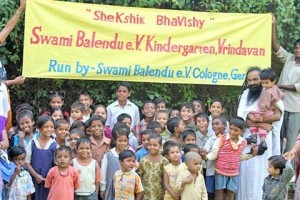
WILLKOMMEN AUF JAISIYARAM.COM!
Man kann in Workshops zu den Chakras, über Yoga oder Ayurveda teilnehmen oder auch zu einer individuellen Heilsitzung, einer Meditation oder einer Chakra Tanz Party kommen.
Auf dieser Internetseite findet ihr Information zu all diesen Aktivitäten sowie verschiedene Möglichkeiten, wie ihr von dieser wundervollen Energie profitieren könnt.
Alle Aktivitäten und Spenden unterstützen Swami Balendus Wohltätigkeitsprojekte für arme Kinder in Indien.
Wir wünschen euch viel Spaß beim Entdecken der Seite!
> Meet Swami Balendu, friends, socialprojects studies at facebook <
NATURWESEN UND ANDERSWELTREISEN

„Dana Mudra“ ist die „Geste des Gebens“, mit der in der indischen und tibetischen Kunst manche Gottheiten und Buddhas dargestellt werden.
Margot Ruis und Gerhard Kogoj haben bei längeren Aufenthalten in Indien viel Wunderbares und auch viel Erschütterndes gesehen, haben Menschen und Organisationen kennengelernt, die großartige Arbeit leisten, um den Ärmsten zu helfen. Aus dem Bedürfnis heraus, diese Arbeit mitzutragen – und zwar effizienter als es Privatpersonen möglich ist – haben sie gemeinsam mit Giorgio Nirvanananda Kriegsch und einigen engagierten Freunden den gemeinnützigen Verein „DANA MUDRA — Die Gebende Hand“ gegründet.
Wir freuen uns, Euch/Ihnen den Termin für das Naturwesenseminar 2010 mitteilen zu dürfen.
8.7. bis 11.7.2010: Naturwesen und Andersweltreisen
Ort: Biohaus Walsberg, Niederösterreich
Alle Informationen gibt es wie immer auch auf unserer Homepage: http://www.danamudra.org/calendar.php. Dort finden sich auch Hinweise auf weitere Vorträge und Veranstaltungen.
Umrao Singh Memorial School (USMS)
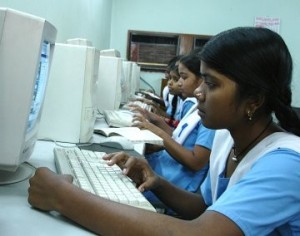
www.ewasa.org , > e-waste <
> UMRAO SINGH MEMORIAL SCHOOL <
Our work started in the early 1980s with the planting of fruit trees in India. The emphasis was on creating awareness, training people to plant and take care of trees, and providing them with the resources needed to accomplish their tasks. Each recipient made a pledge to help at least two others in the same manner in which they had been helped.
The program grew rapidly in India and spread to Guatemala, Cambodia, Nepal, Costa Rica, Haiti, Indonesia, Brazil, Mexico, Ethiopia, Nicaragua, and El Salvador. As a result, tens of millions of fruit trees have been planted.
But far more important than the number of trees planted is the fact that tree planting inspires many people to do more to help themselves. They have started projects on bee-keeping, fuel-efficient stoves, improvement of their soils, water conservation, scientific improvement of plant breeding materials, self-help loans, improvement of medical facilities, improvement of educational facilities, and other socially responsible activities.
A large portion of funding and resources for activities in each country is generated locally. These resources are mostly provided in terms of land, labor, and in-kind contributions from various segments of the society. The international funds and resources provide key elements that are lacking locally.
We realize that our task is not to solve the problems of the world. Our challenge is to create a few demonstrable models that, if successful, may inspire others to solve their own problems. In this manner we are akin to a laboratory where an antidote to a disease may be developed. We are not a factory where the antidote is manufactured for sale.
Our focus is on developing and providing the tools of empowerment to local community leaders who can create hope among others. Empowerment in our case means:
Awareness + Networking of resources, which lead to → Action
GIFT´s FROM THE HEART: > HERE <
Our Initiatives:
- Books for Life International – spreading the joy of reading to children in developing countries worldwide.
- The Moringa Tree – encouraging the use of this miraculous tree and further research into its benefits.
- Education – empowering the poor to reach long-term goals through quality education.
- Fruit trees – helping provide a long-term and renewing source of food to the hungry of the world.
- Fuel-efficient cookstoves – saving lives with these cookstoves built with local materials by local residents.
- Trees for Life Journal – bringing beneficial plants and trees to the attention of the scientific community.
DER BAUORDEN – Helfende Hände in Moldawien
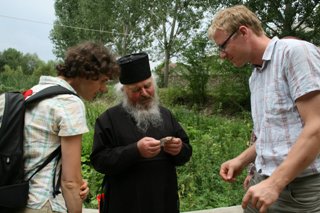
Der Internationale Bauorden (IBO) ist eine in vielen europäischen Ländern verbreitete gemeinnützige Organisation, die europaweit Baulager für junge Erwachsene organisiert, in denen Gemeinschaftseinrichtungen oder Wohnhäuser für Bedürftige errichtet oder renoviert werden. Auch historische Bauwerke werden in solchen Einsätzen restauriert. Der Bauorden wurde 1953 vom niederländischen Ordensgeistlichen Werenfried van Straaten gegründet, um Studenten zu motivieren, in Deutschland Flüchtlingen und Vertriebenen beim Bau von Eigenheimen zu helfen. Der Bauorden finanziert sich durch Spenden und öffentliche Zuschüsse. Die deutsche Sektion hat ihren Sitz in Ludwigshafen. In den Baulagern wird in internationalen Gruppen von sechs bis zwölf Teilnehmern in der Regel drei Wochen lang gearbeitet. Unterkunft und Verpflegung sind für die Freiwilligen frei, für die Fahrt wird ein Zuschuss zu den Reisekosten gezahlt. Der Bauorden bereitet die Projekte vor und kümmert sich um Werkzeuge und Baumaterial. Für Architekturstudenten kann die Teilnahme an einem Baulager des IBO als Baustellenpraktikum anerkannt werden. Der Internationale Bauorden verleiht seit 2005 alle zwei Jahre den Joseph Schmitt-Preis für eine Examensarbeit in den Bereichen Internationale Jugendarbeit, Internationale Freiwilligendienste, Jugendreisen sowie Jugend und Europa. Der Preis ist mit 1000 Euro dotiert. Read More: > HERE < / Int. IBO: www.bauorden.de
Was ist der Bauorden? – Seit 1953 treffen sich Jahr für Jahr hunderte junge Menschen, um in der ganzen Welt – vor allem aber in Europa – bei karitativen und sozialen Bauprojekten unentgeltlich mitzuhelfen.
Jeder Freiwillige, der körperlich in der Lage ist, Bauhilfsarbeiten durchzuführen und bereit ist , fremden Menschen zu helfen, ist uns willkommen.
Moldawien zählt zu den ärmsten Ländern Europas. Das Alters- und Pflegeheim „Casa Max“ in Capresti beherbergt 40 alte Menschen, die zwischen 63 und 83 Jahre alt sind. Das Haus ist ohne menschenwürdige sanitäre Anlagen und Fließwasser; bei der Fertigstellung des Heimes aber auch bei der Renovierung eines Hauses einer kinderreichen und armen Familie halfen die Freiwilligen mit.
